EXHIBITION CONCEPT
Presentation: the folding screen
The wooden panel and folding screen format reference traditional Japanese painting, which provides the work with homogeneity and consistency as it draws upon indigenous cultural values for its formation.
The different spaces in which the collection is to be displayed will allow for multiple levels of interpretation, and reveal aspects and meanings inherent in the collection. With this type of installation, paintings escape traditional presentation on a wall, and thus reach the viewerʼs level by offering a variety of routes for each exhibition.
The different spaces in which the collection is to be displayed will allow for multiple levels of interpretation, and reveal aspects and meanings inherent in the collection. With this type of installation, paintings escape traditional presentation on a wall, and thus reach the viewerʼs level by offering a variety of routes for each exhibition.
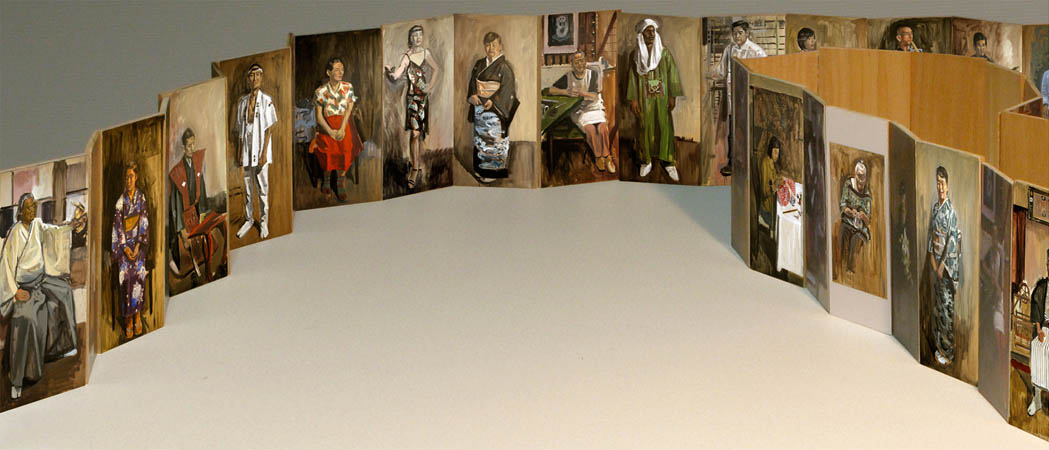
Museum of Kyoto exhibition (Kyotofu bunka hakubutsukan)
Considering the theme of the collection, having the first exhibition in the city of Kyoto was of course ideal. The Museum of Kyoto, which is devoted to show Kyotoʼs culture from traditional forms to contemporary art, provided this opportunity, and this recognition from a cultural authority elevated the status of this work to art.
For this occasion, the choice was made to exhibit the folding screen in its entirety: the 100 portraits have been arranged in their chronological order to create a long 90-metre painting.
For this occasion, the choice was made to exhibit the folding screen in its entirety: the 100 portraits have been arranged in their chronological order to create a long 90-metre painting.
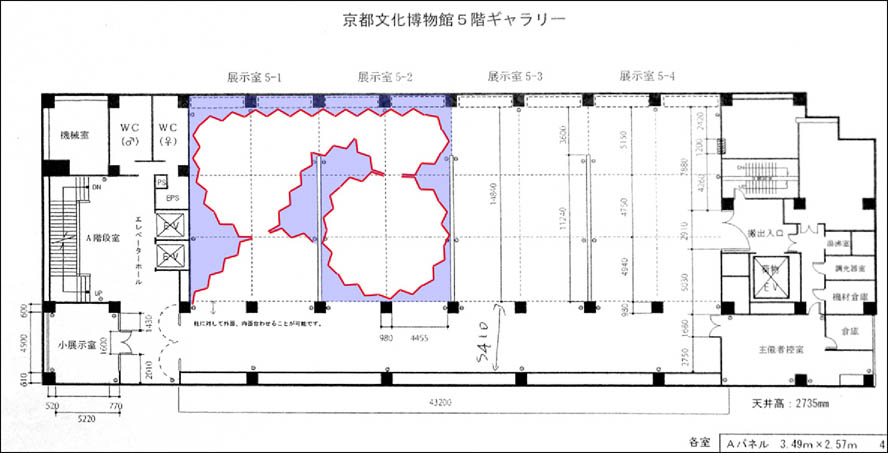
Fig.a
Different solutions were considered, from a simple juxtaposition of paintings to follow the exhibition floor plan to the creation of an independent and original space that would include unique perspectives and viewpoints (Fig. a).
This exhibition took place from 10 to 15 September 2014, with 825 visitors in six days.
This exhibition took place from 10 to 15 September 2014, with 825 visitors in six days.
You can relive the experience of the inaugural exhibition at Kyoto Bunka Hakubutsukan in the 3D version that is offered below.




You can move around by using ctrl key + cursor keys or arrows on top-right.
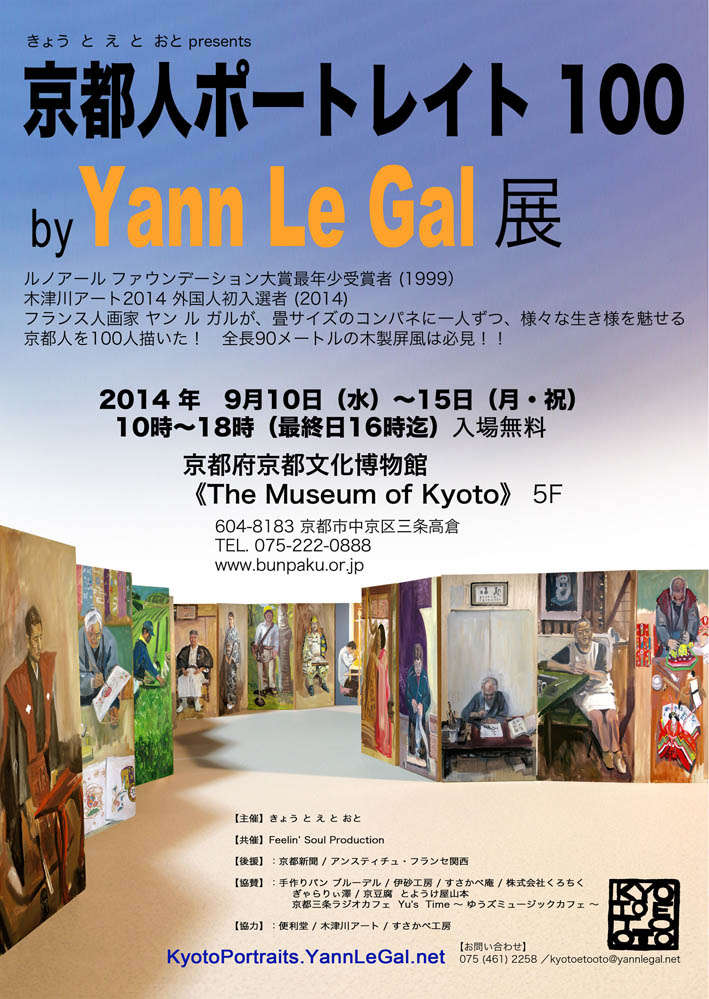
Exhibition poster for the Museum of Kyoto Bunka Hakubutsukan.
Exhibition at the contemporary art festival of Kizugawa 2014 – Exhibition at the city
hall of Kizugawa, from 2d to 15th November 2014.
In 2014, a third contemporary art festival took place in Kizugawa City, located in southern Kyoto Prefecture. The "Kyoto portraits 100" project was chosen to be exhibited with the works of forty artists from different backgrounds. Each had to occupy a place in the city with their art. We opted for the city hall, its modern architecture particularly suited for the presentation of the collection in a large and luminous hall.
This exhibition place is significant and replete with meaning, and presenting the portraits in this space imparted another point of view and understanding of the work, which differed from the interpretation provided by the Museum of Kyoto. As the administration centre of the city, the City Hall conducts population surveys; it is also a centre for citizens to accomplish various formalities: birth and death registrations, marriages, various forms, and more. The aim of this presentation was to echo the function of the place with a large installation that symbolised citizens and their reduction to mere numbers for the purpose of the administration.
This exhibition place is significant and replete with meaning, and presenting the portraits in this space imparted another point of view and understanding of the work, which differed from the interpretation provided by the Museum of Kyoto. As the administration centre of the city, the City Hall conducts population surveys; it is also a centre for citizens to accomplish various formalities: birth and death registrations, marriages, various forms, and more. The aim of this presentation was to echo the function of the place with a large installation that symbolised citizens and their reduction to mere numbers for the purpose of the administration.
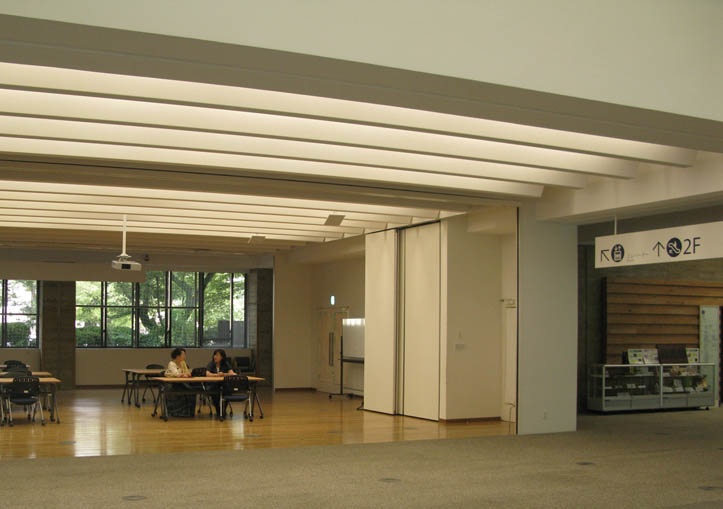
Entry hall of the Kizugawa city hall.

Study model for the city hall of Kizugawa.
In this presentation, a mirror was positioned to include the visitor in the collection, and to also reinforce the impression of being in the midst of a painted crowd.
Below, different viewpoints of the exhibition.
Below, different viewpoints of the exhibition.
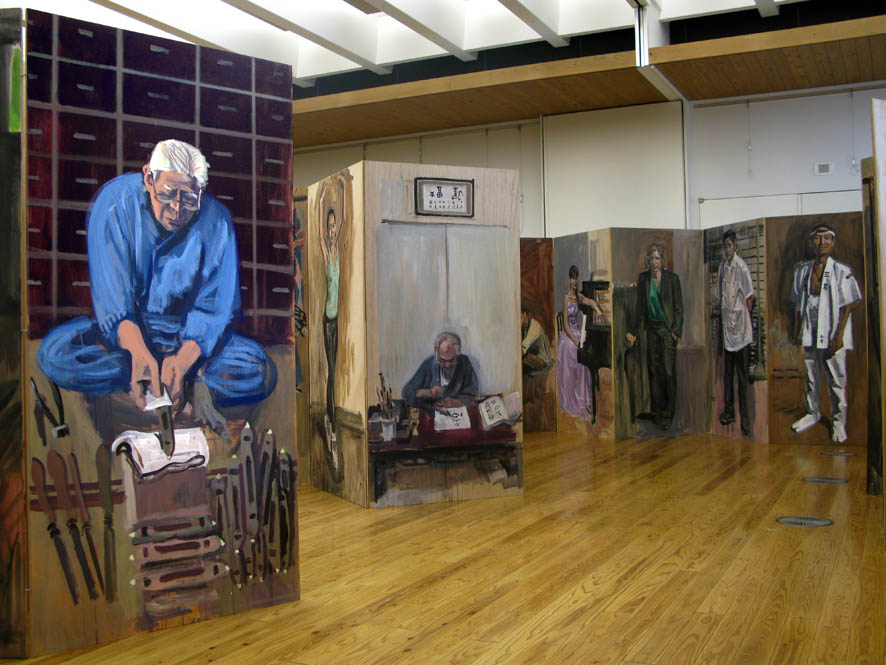
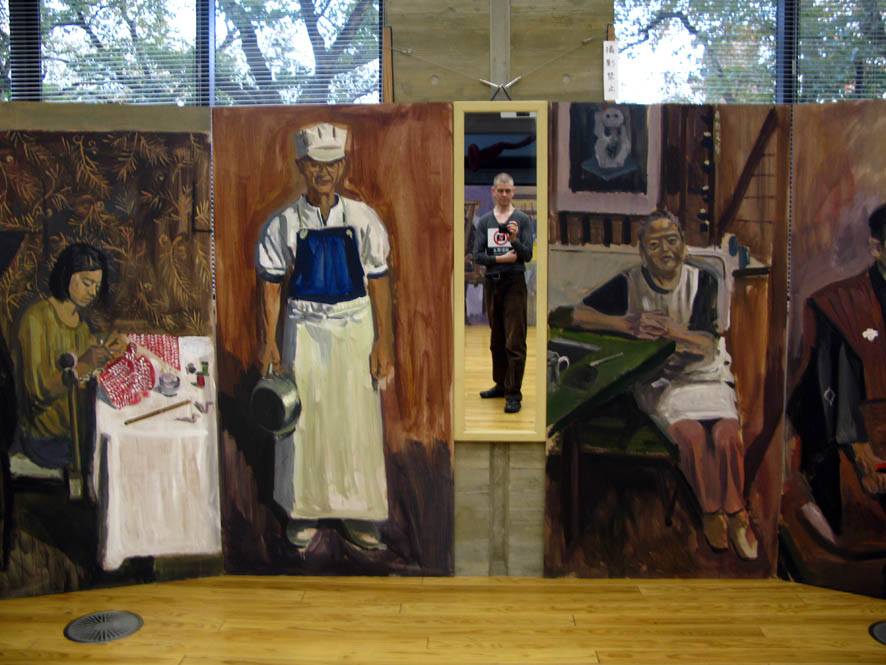
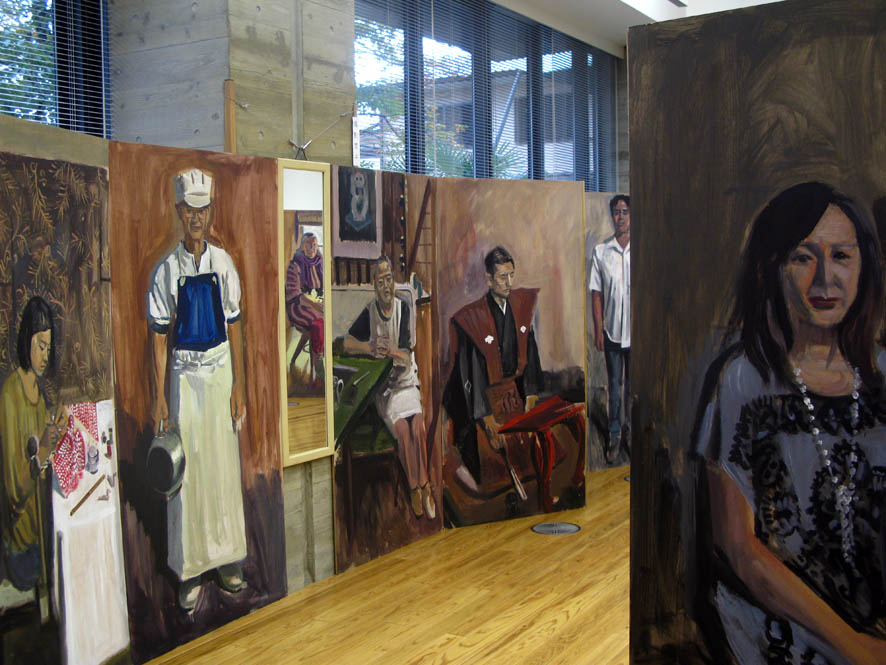
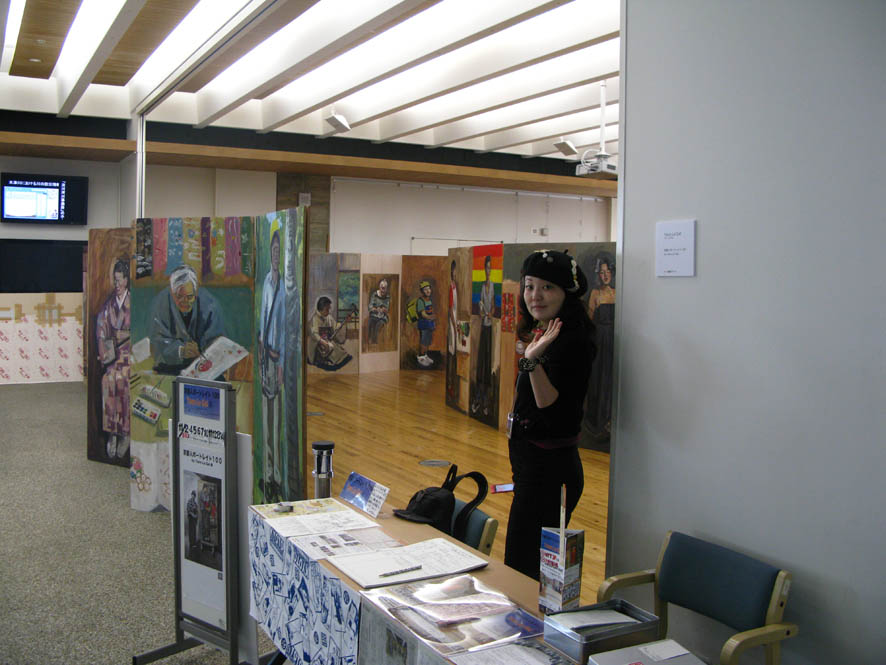
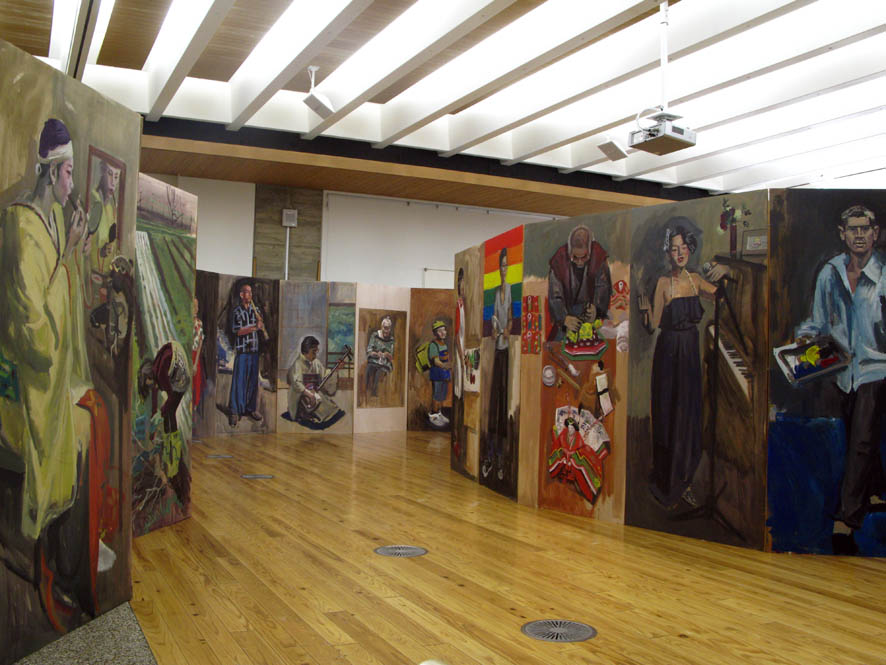
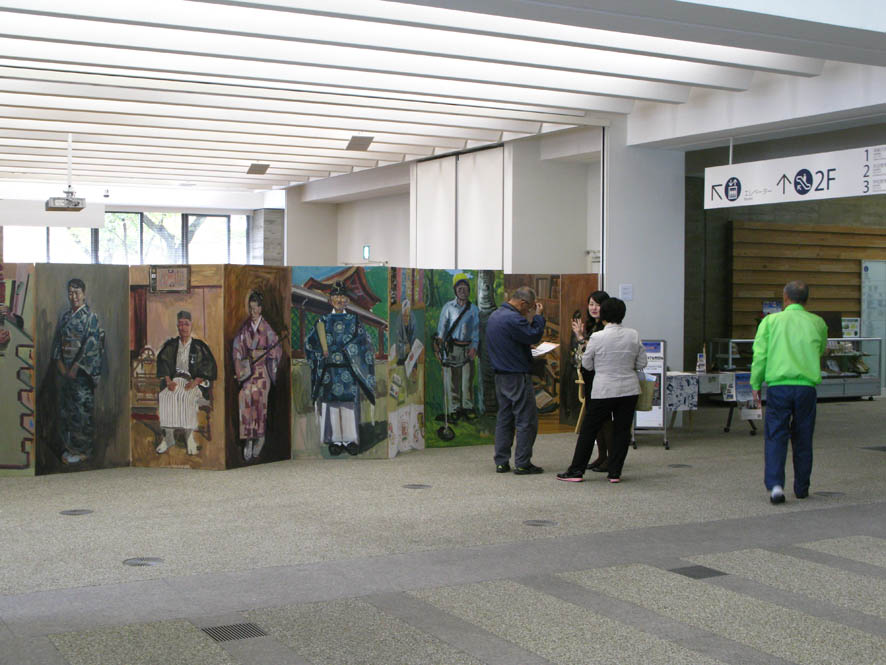

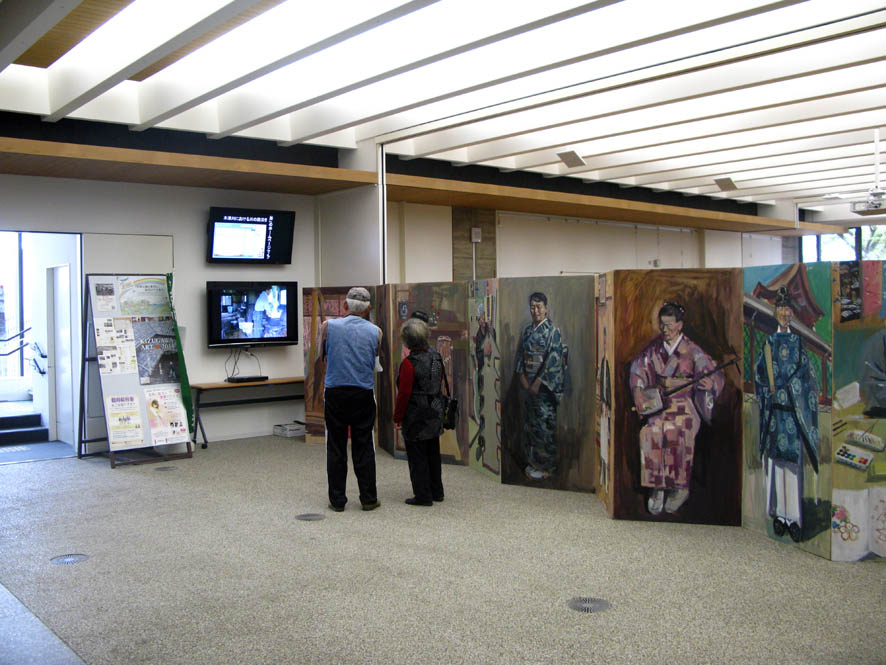
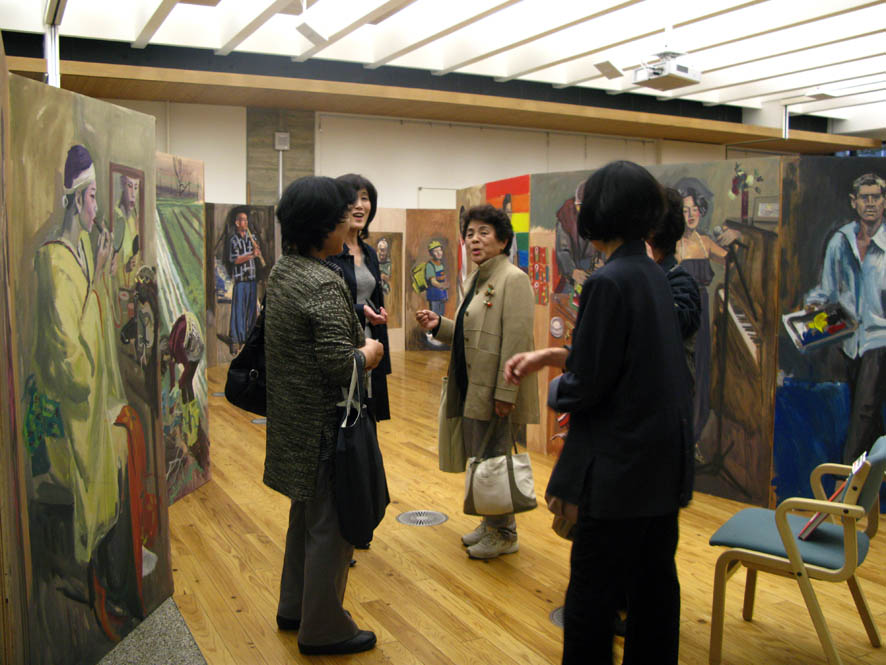
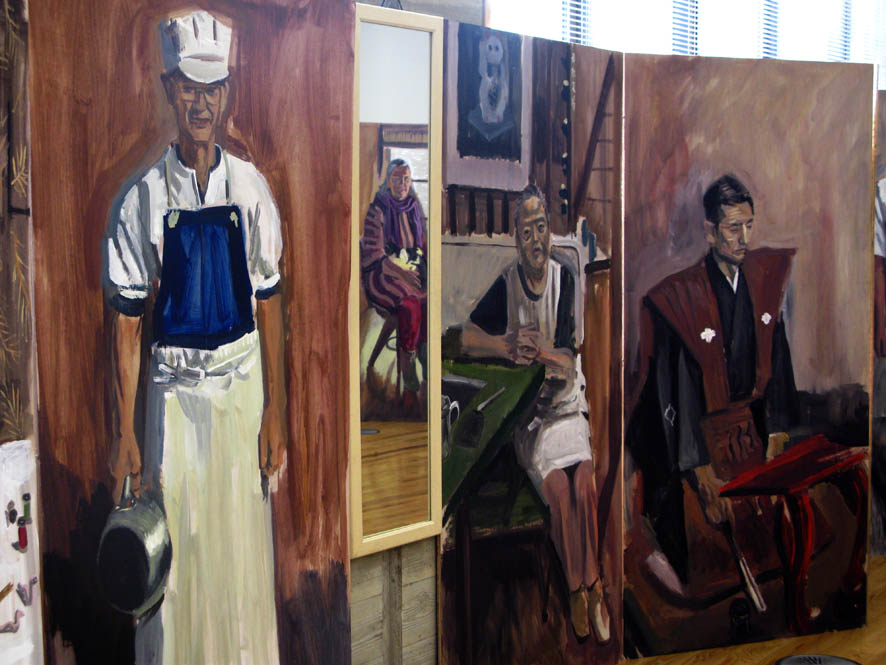
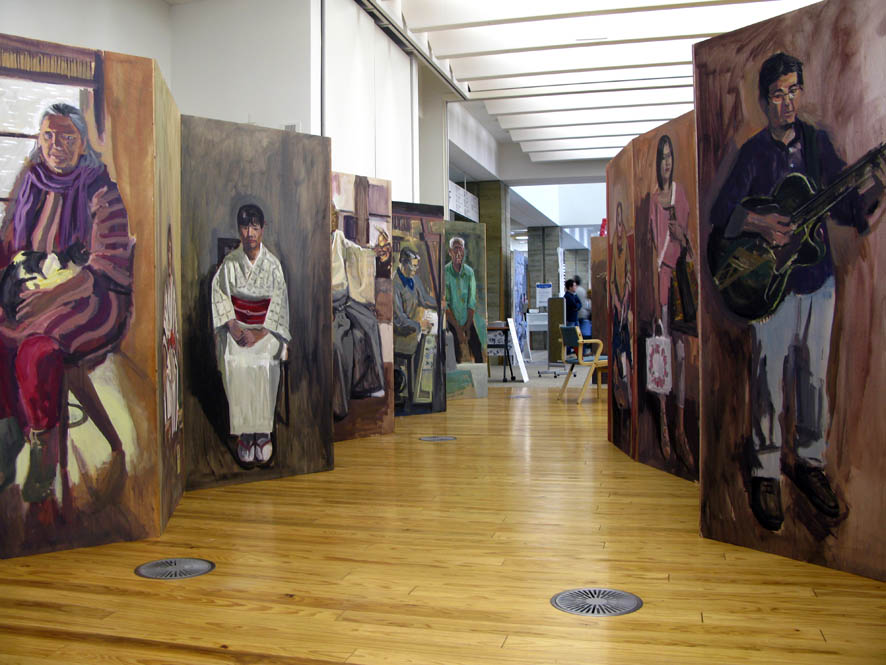
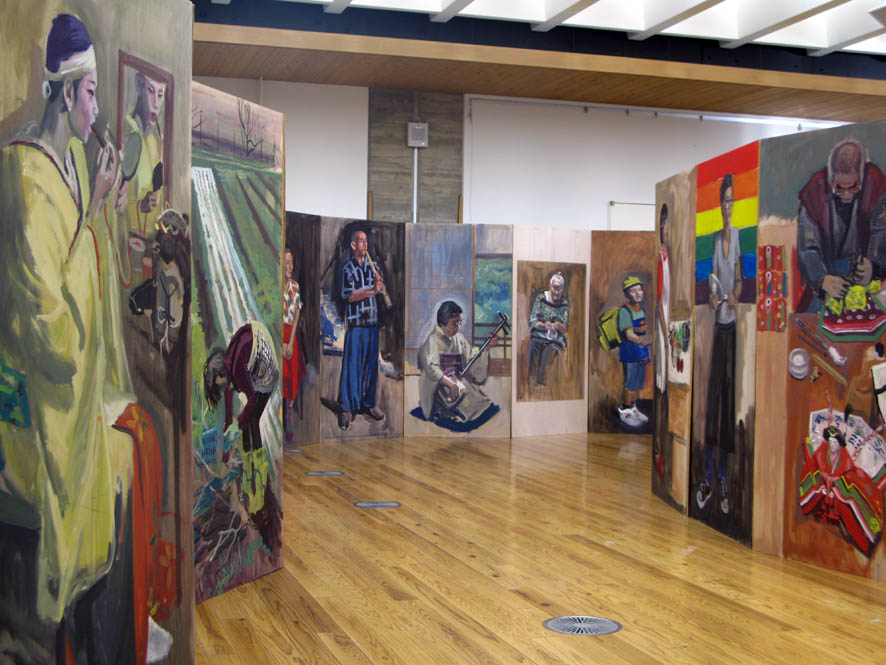
© Kyo to e to oto & Yann Le Gal 2017 - All right reserved - Web Developer: P. Baillehache
